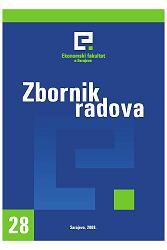Sveobuhvatni pristup analizi likvidnosti
Contemporary model of liquidity analysis
Author(s): Benina Veledar, Ševala Isaković-KaplanSubject(s): Economy
Published by: Ekonomski fakultet u Sarajevu
Keywords: liquidity; cash flow liquidity ratio; the quick or acid-test ratio; the current ratio; working capital ratio;
Summary/Abstract: The main goal of this paper is to prove that traditional liquidity analysis, in modern operations conditions, based exclusively on financial statements indicators, is not sufficient. We also need to consider all nonfinancial possibilities of collecting receivables and paying liabilities, which can have significant influence on liquidity and solvency of the company, and which are not followed by timely reporting period. Nowadays, companies have more possibilities to deal with the non-liquidity problem than before, through nonfinancial transactions such as: exchanging fixed assets and inventories for liabilities, compensations, cessions, etc. In our paper, we will mention a few examples of the simplest and most frequently used nonfinancial transactions for paying current liabilities, and present their influence on the main liquidity ratios such as: cash flow liquidity ratio, the quick or acid-test ratio, the current ratio, working capital ratio. As mentioned above, we can conclude that companies have possibilities to enter the transactions with business partners, due to the fact that the company’s dependence on expensive short-term loans for liquidity covering is decreased, and at the same time its business activity is stimulated.
Journal: Zbornik radova Ekonomskog fakulteta u Sarajevu
- Issue Year: 2008
- Issue No: 28
- Page Range: 557-568
- Page Count: 12
- Language: Bosnian

